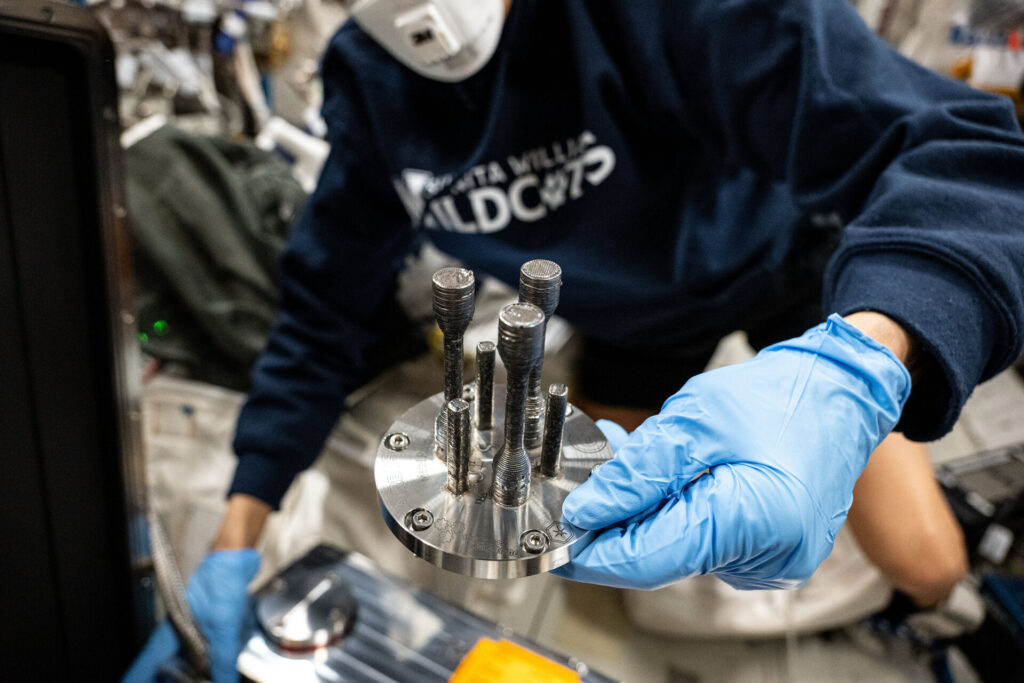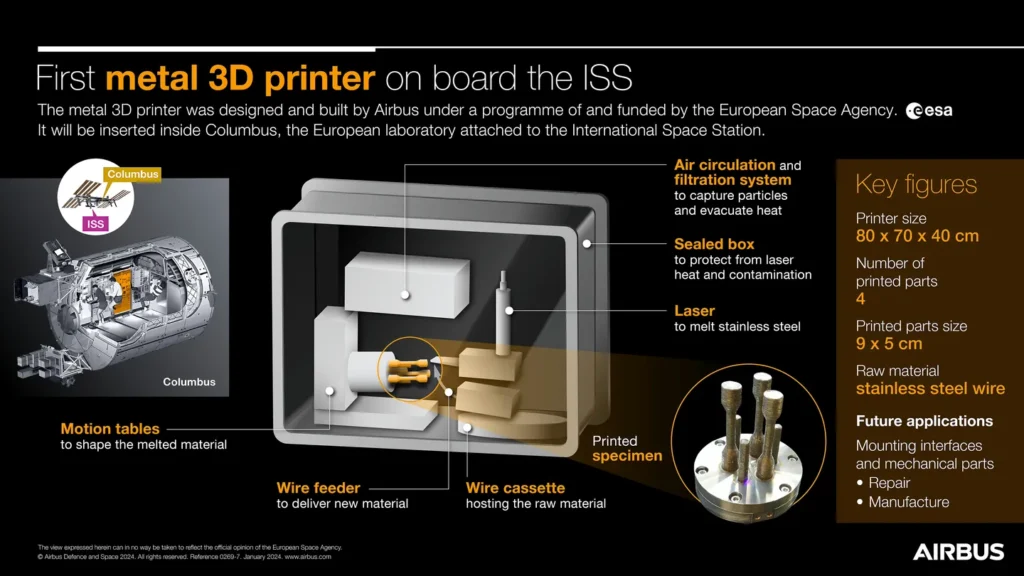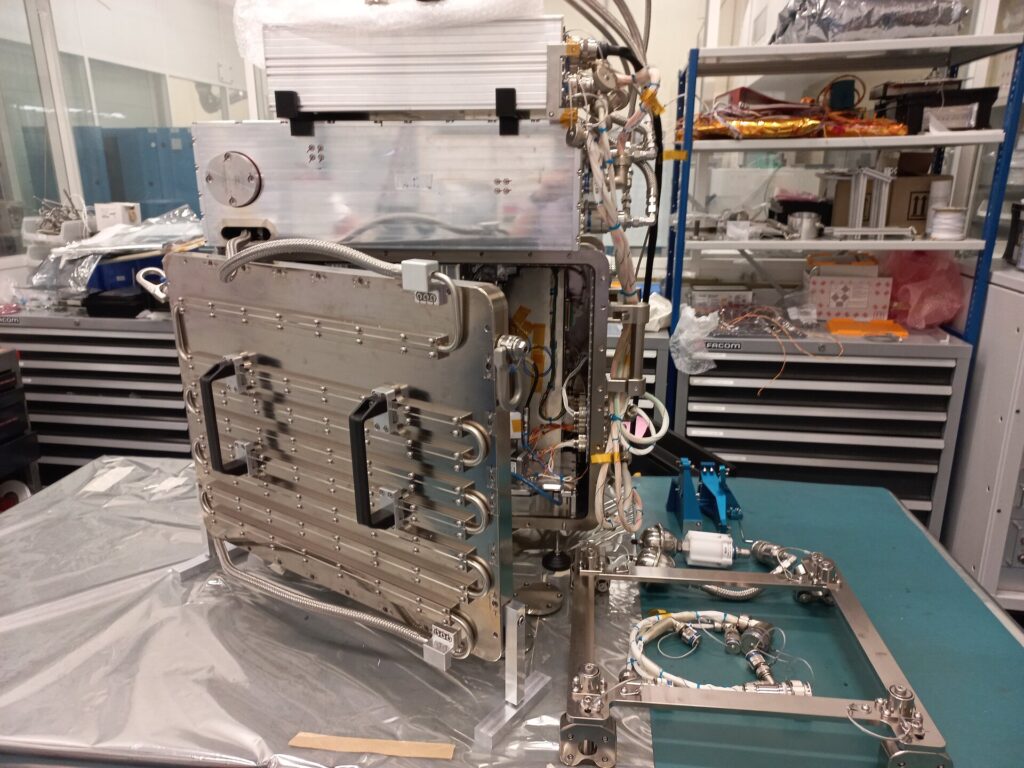The ISS crew has printed a metal part in space for the first time in history. A 3D printer created by Airbus and its partners was used for this purpose.

The 3D printer was delivered to the ISS in January 2024. Its key goal is to demonstrate the possibility of producing metal parts in microgravity. The printer was installed aboard the Columbus module. It was placed in a hermetically sealed box acting as a safe and maintaining the right atmosphere inside the printer with a very low oxygen level.
This measure is due to security considerations. The printer prints using a powerful laser that melts stainless steel wire. The process temperature exceeds 1200 °C. By replacing oxygen with nitrogen, engineers eliminate the risk of fire. It also prevents oxidation of the metal.
The printing process began in May 2024. It was controlled by specialists from Airbus and the French National Space Research Center from Earth. After commissioning tests, the printer formed the first layer, which was applied to a moving plate of the desired shape. After confirming the success, the experts switched to 3D mode and started applying new layers on it.

The most difficult task was determining the correct layer height. It was measured before sending a calibration command to adjust the height of the next layer. By mid-July, 55 layers later, half of the first sample had been printed, marking the beginning of a “cruise phase,” when print speeds accelerated due to process optimization.
By the beginning of August 2024, the first sample was ready for extraction. The atmosphere inside the sealed box was then brought to normal condition so that it could be opened safely. On August 21, astronauts Sunita Williams and Jeanette Epps extracted the printed part.

In the next phase of the experiment, the ISS crew will print three more parts. They will then be transported to Earth, where their mechanical properties will be compared to similar parts made in a ground-based laboratory. This way, experts will learn how microgravity conditions affected printing performance. This data can be applied in a multitude of fields, from manufacturing in Earth orbit, to missions that aim to establish permanent bases on the Moon and Mars.
According to Airbus


